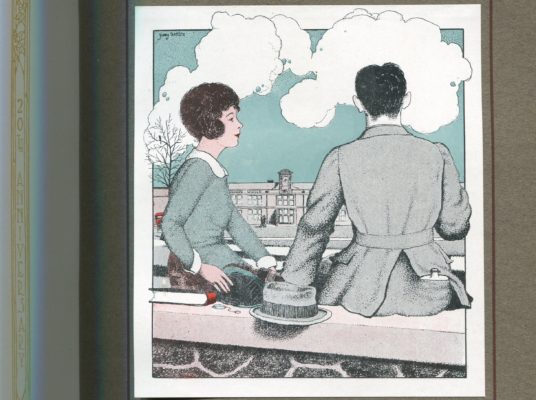Washington University signed an agreement with the US government, launching a six-year collaboration with Korea University and Yonsei University to repair and modernize business education programs in South Korea that were gutted by war, languishing from a stagnant economy, and stalled in old-fashioned teaching practices.
From 1958 to 1964, the Korea Project sent Olin faculty on extended tours of duty in Seoul to counsel educators overseas, demonstrate new teaching styles, write new curricula, and rebuild business libraries at the two schools.
Meanwhile, dozens of South Korean business professors observed, studied, and earned business degrees in Washington University classrooms in St. Louis.
“The Korea Project is one of the great chapters in Olin’s history and one of the important ones in Washington University’s history,” said Bob Virgil, Olin Dean Emeritus, who served as a graduate student aid to the program’s leadership and still counts many of the Korean exchange students as longtime personal friends.
Bob Virgil talks about the Korea Project and its impact in video above.
Goals of the project
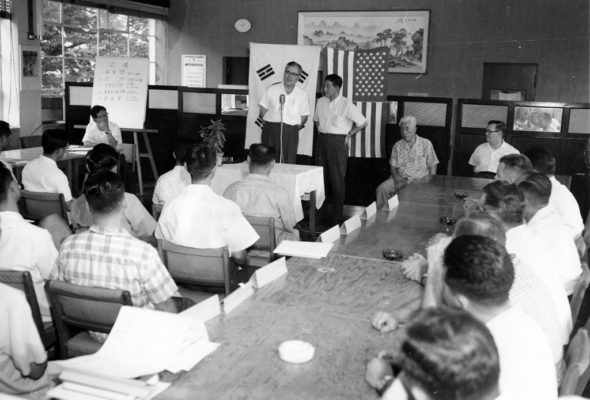
Washu professors teaching in Seoul classroom.
Nobody credits the Korea Project for South Korea’s economic rise, but many agree on both sides of the Pacific that the intense concentration of academic resources helped push the nation’s business community in the right direction.
“It was a great contribution that Washington University made in Korea,” said Ja Song, who came to St. Louis to earn his MBA as part of the Korea Project’s effort to train overseas colleagues.
After graduating in 1961, Song served a mandatory 16-month tour in the Korean army, and returned to earn his doctorate in accounting. He taught for 10 years at the University of Connecticut, then returned to teach in Korea until 1992 when he began a four-year term as president of Yonsei University—the college that had recommended him for the Korea Project in the first place.

Link to the entire story on the Korea Project by Kurt Greenbaum on the Olin100 website.


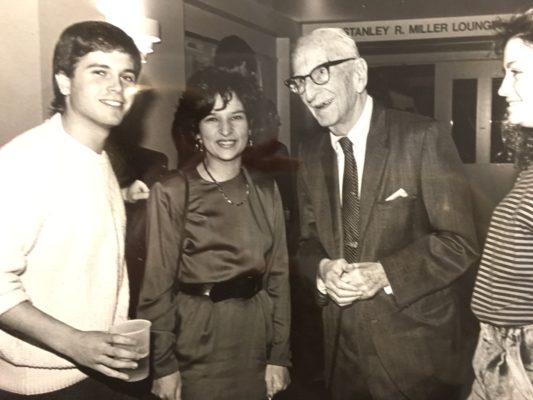



 According to Washington University historian Ralph E. Morrow, Trump “was endowed with bulldog determination, canny judgment, and knew where he wanted to take his school”—which, as it turned out, was abroad.
According to Washington University historian Ralph E. Morrow, Trump “was endowed with bulldog determination, canny judgment, and knew where he wanted to take his school”—which, as it turned out, was abroad.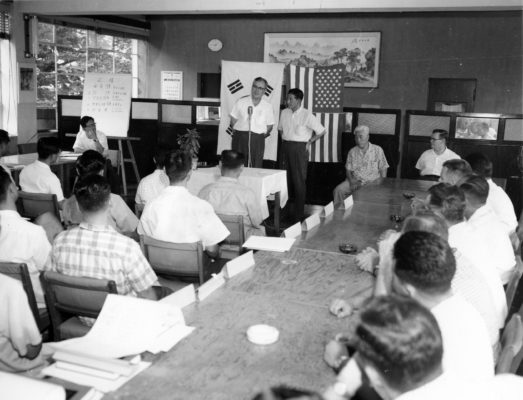
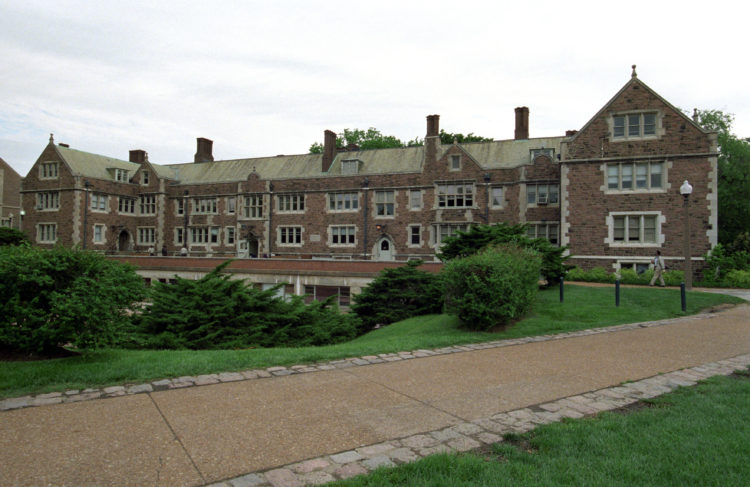
 As part of our Centennial series, we turn the clock back to the 1960s when the business school outgrew its first building and moved to a remodeled dormitory.
As part of our Centennial series, we turn the clock back to the 1960s when the business school outgrew its first building and moved to a remodeled dormitory.
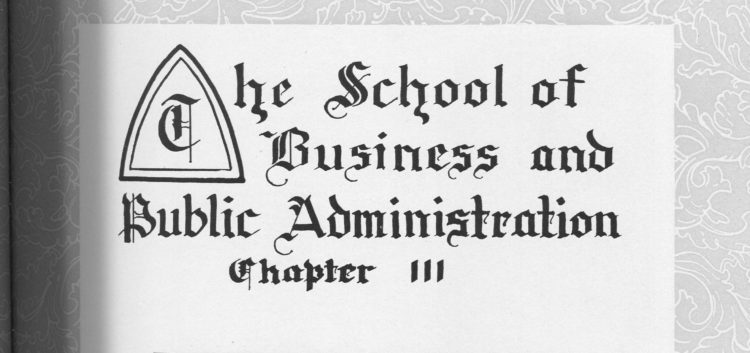
 Faculty salaries were set to increase by 50% over the 1916-1917 rates for professors making $4,000 or less. The increase was contingent on reaching a campaign goal for a salary endowment fund.
Faculty salaries were set to increase by 50% over the 1916-1917 rates for professors making $4,000 or less. The increase was contingent on reaching a campaign goal for a salary endowment fund. By 1929, the business school had 200 students enrolled and 100 candidates for degrees. It had changed its name to include Public Administration a few years earlier and was clearly gaining in stature as suggested in this essay from The Hatchett yearbook:
By 1929, the business school had 200 students enrolled and 100 candidates for degrees. It had changed its name to include Public Administration a few years earlier and was clearly gaining in stature as suggested in this essay from The Hatchett yearbook: